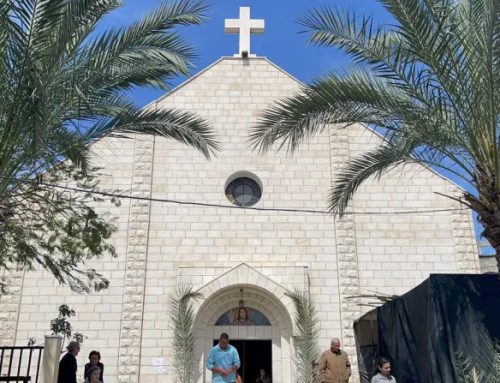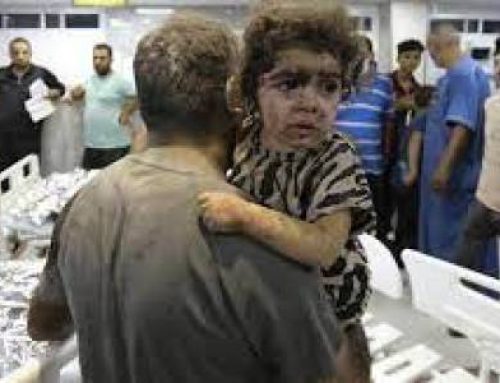Pope John XXIII issued his Encyclical letter Pacem in Terris a short while after the world had witnessed the construction of the Berlin Wall in 1961 and the Cuban missile crisis of 1962
Pacem in Terris
HH Pope John XXIII
11 April 1963
Pope John XXIII issued his Encyclical letter Pacem in Terris a short while after the world had witnessed the construction of the Berlin Wall in 1961 and the Cuban missile crisis of 1962. This comprehensive quasi-juridical document underscored the Pope’s committed belief that the four pillars of peace were truth, justice, charity and liberty. Pax Christi International (PCI), the largest Catholic grassroots worldwide movement, adopted this message from Pacem in Terris as one of its flags, and Pope John-Paul II referred also to its theme in his World Peace Message 2003 earlier this year.
On 29 March 2003, HB Michel Sabbah, Latin Patriarch of Jerusalem and PCI International President, re-visited this Encyclical when addressing the Pax Christi National Congress in France. The highest Catholic cleric in Jerusalem underlined that ‘a guiding moral order has been lacking to direct and sustain the economic, political, cultural and military order of our day. Without such guidance, ideological systems like Communism or unbridled capitalism arise with a seemingly solid base, but in reality they are very weak because they lack clear moral foundations.’ He added that, ‘they are like the enormous statue in King Nebuchadnezzar’s vision: of extraordinary brilliance and terrible countenance, his head was of pure gold, his chest and arms of silver, his abdomen and loins of bronze, his legs of iron, but his feet were part iron and part clay. It was enough to strike the statue’s feet for it to crumble like sand on a sand-swept beach, blowing away and leaving no trace.’
Indeed, if the world were to succeed in making a transition from a culture of war to one of peace, the different world religions must also assume their ecumenical and interfaith roles to help create a more just and free world. To start with, religions should not be used wrongly and exploitatively as tools for war! As Pope John XXIII said, those four pillars of truth, justice, love and freedom could help realise ‘humankind’s perpetual dream’ for world peace in a broken world.
But those lofty papal ideals articulated forty years ago are also being challenged almost daily in the uneven conflict between Israelis and Palestinians. Under the guise of dismantling the infrastructure of Palestinian terrorism, Israeli forces have systematically destroyed almost every political and civil Palestinian institution in the past twelve months! Not only have Chairman Arafat’s proto-government and security services been decimated, so have banks and businesses, schools and research centres, town halls and the media, the land registry and the courts. Sad really, when the USA could shape the future of this region but lacks the political resolve, whereas the EU governments have the ambition but lack the political means. Did St Augustine not write in De civitate Dei, ‘Take away justice, and what are kingdoms but mighty bands of robbers?’
It is becoming clearer now, more so with a post-Saddam Iraq upon us, that the only practical way forward for Israelis and Palestinians alike is the ‘roadmap’ offered by the Quartet of the EU, the UN, the USA and Russia. However, this ‘roadmap’ should be unpacked now, not at some convenient distant future, when all ‘terrorism’ has ceased – as America has demanded of Palestinians for months now. After all, addressing the conditions in which terrorism flourishes is not the same as condoning it! Recognising the terrible plight of the Palestinians is not to offer excuses for the massacre of innocent Israelis!
I also do agree that there are numerous potholes, boulders and blind corners with the ‘roadmap’. Those who read the document carefully will see the many ambiguities – over the immutability of Israel’s pre-1967 borders, over settlements in the occupied territories and over the final status of Jerusalem. But marking out the route remains a formidable achievement. There are staged confidence-building measures, careful sequencing and a solid commitment to provide the necessary security guarantees that are meant to bring about a viable and democratic Palestinian state. Yet, for all its flaws as an ‘Oslo-Minus’ document, the ‘roadmap’ combines a rational and fair destination with intelligent sign posting and assured international support along the way. The signature of the UN confers legitimacy, that of the EU financial resources and that of Russia strategic depth. Surely the final ingredient lacking now is US pressure that would tap into the American moral fibre for truth.
Observing the situation in the Holy Land today, I recall another Encyclical letter Libertas Praestantissimum issued by Pope Leo XIII on 20 June 1888. The document said that ‘true freedom, freedom worthy of the sons of God, is that which most truly safeguards the dignity of the human person. It is stronger than any violence or injustice.’ Indeed, such freedoms tally with Patriarch Michel Sabbah’s query about the moral foundations on which a sustainable peace can be built today. And as I envision peace on earth, the image of Nebuchadnezzar’s brazen statue with soft clay feet springs very much to mind too!
(c) hbv-H @ 11 April 2003





